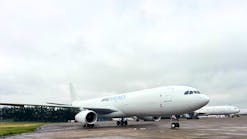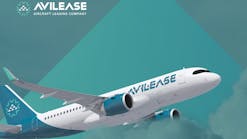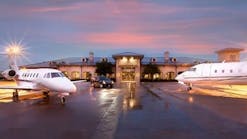LONDON -- Not since the introduction of the Boeing 747 has the commercial aviation world anticipated the arrival of an aircraft. Launched in December 2000, the Airbus A380 is expected to begin test flights in the first quarter of 2005 and enter into passenger airline service in 2006. With each new generation of aircraft comes the necessity of airports to accommodate those airlines that will be flying the new aircraft. As BAA Heathrow's development manager Julie Wynn says, it's a matter of matching the investment of the airlines. Here's what some of the world's leading airports are doing in preparation for the A380. Airbus S.A.S is an EADS joint company with BAE SYSTEMS. The double decker aircraft with some 555 seats is touted by Airbus as the "most advanced, spacious, and efficient airliner ever conceived." According to Airbus regional press manager David Velupillai, the aircraft will be 15 to 20 percent more economical per seat to fly than other aircraft currently available. Additionally, the aircraft is designed to be significantly quieter and burn some 13 percent less fuel than competitors. It is not, however, comparing apples to apples. The aircraft will have a range of 8,000nm and weigh some 1,235,000 pounds.
HEATHROW'S INVESTMENT
At London's Heathrow International Airport, operated by BAA, planning and construction to accommodate the larger aircraft is well under way. The airport is investing some $845 million (January 2005 dollars) in enhancements to the airport and airfield in expectation of the A380.
A portion of Terminal 3, Pier 6, was demolished and reconfigured. The new three-story structure is 280 meters in length and 20 meters wide. Construction began in April 2004 and is scheduled for completion in December 2005. At a cost of roughly $188 million, the project will include four gates capable of handling the A380. Two of the gates will also provide the option of accommodating either larger aircraft or two medium-sized aircraft. The double decker aircraft will require twin boarding bridges for loading and unloading passengers, which are being manufactured by Thyssens.
The new facility will have 450 seats per gate room as well as a first-class lounge. Plans to allow other terminals at LHR to handle the larger aircraft are currently under development. Terminal 5, the airport's latest and largest addition to be completed in 2008, will include the infrastructure to handle five A380s (four contact gates and one remote). According to officials, by 2011, the new T5 will have a total of 14 gates equipped for the A380.
Ian Gatherum, media relations manager, explains that because of the increased amount of baggage the aircraft will naturally carry, the baggage system being installed in the new construction will also be upgraded. Normally, baggage belts are some 50-60 meters long. The baggage belts that will be installed in Pier 6 will be 75-90 meters in length.
Along with terminal renovations, LHR has widened and strengthened the runway shoulders, as well as upgraded runway lighting. The A380's outer engine position and wider wingspan require a wider taxiway. In comparison, the Boeing 747-400 has a wing span of 211'5"; the A380 measures out at 261'10".
According to Gatherum, Singapore Airlines expects to have the first commercial flight at LHR in 2006. A compatibility flight is scheduled at Heathrow in late 2005.
‘OPERATIONAL READINESS'
In advance of the aircraft's arrival, LHR has implemented several training sessions for airport and airline service employees who will be handling the aircraft.
According to Francis Richards, head of airside operational readiness, the Operational Readiness workshops are designed to help airlines operating the A380 to develop procedures for aircraft pushback and towing, de-icing, fueling, catering, baggage handling, cleaning, passenger handling, medical lifts, and fire and emergency response. The workshops began in October 2004 and will run through 2005. Additionally, Heathrow holds quarterly meetings with airlines, ground handlers, and others to ensure preparations are on task.
Heathrow currently handles some 66 million passengers annually and airport officials see the A380 as an opportunity to meet passenger growth without a tremendous increase in the number of flights. Airport statistics show that by 2016, one in every eight flights at Heathrow could be by an A380. This estimated 60,000 movements per year could allow nearly 10 million additional passengers to fly to or from Heathrow without an increase in flights.
Airlines anticipated to operate the aircraft at Heathrow also include Emirates, Virgin Atlantic Airway, Qantas, Qatar Airways, and Malaysia Airlines.
Wynn views Heathrow's investment as a commitment to the investment by the airlines that will be operating the new generation of aircraft. Says Wynn, "The introduction of the 747 changed aviation; the A380 is going to do the same thing."
SFO -- Ready Today
At San Francisco International Airport, community affairs director Michael McCarron says the airport is prepared for the arrival of the A380. The airport received full airfield and terminal certification from the FAA for handling the aircraft.
Some ten years ago, the airport began planning for a new international terminal. Anticipating the introduction of larger aircraft, officials designed the new structure to be capable of handling them.
The design of the new terminal allows for adequate space on the ramp for the larger aircraft, as well as two loading bridges for upper and lower loading of passengers, additional seating in the gate area, common use check-in facilities, 100 percent in-line baggage screening, and five A380-ready gates.
Like Heathrow, SFO has widened some shoulders on taxiways. McCarron explains that there will be some restrictions on operations at SFO because the airport's runways are too close together to allow simultaneous operations of two A380s.
SFO has an immigration capacity of 5,000 arriving passengers per hour, as a major gateway to and from Asia.
McCarron expects the introduction of this aircraft will have a positive impact on SFO. "We think this will be a big boon for the economy," he says. "We're excited to see the aircraft come here."
Currently SFO has some 980 movements per day and some 33 million passengers annually.
LAX continues to prepare
Los Angeles International Airport is involved in several projects across the airfield and terminal areas to prepare for the arrival of the A380, says Mark Massman, deputy executive director for project and facilities development. "All these projects are being done on a schedule to be completed by the arrival of the first Qantas flight of the A380 in November 2006," says Massman. Other airlines at LAX expected to operate the A380 include Lufthansa, Virgin, Air France, Singapore Airlines, Korean Airlines, and FedEx.
One of the projects involves the maneuverability of the aircraft around the airfield, at a cost of some $28 million. This includes relocation of some hydrant fueling equipment as well as a study of ground support equipment placement and what type of equipment will be required to handle the A380.
LAX is preparing its Tom Bradley International Terminal to accommodate the A380. As part of a $10 million project, two of the contact gates at TBIT will be equipped for the A380, including dual loading bridges, expanded hold rooms, and access to the second level boarding bridge.
Because TBIT is a common use facility, Massman says any capacity problems in the ticketing area should be avoided. "It could be a major issue for other airports that are not common use," he says.
Additionally, LAX uses remote gates at TBIT, four of which will be converted to accommodate the A380, at a cost of $12.5 million. Massman estimates these improvements will meet demand requirements of the A380 through 2010. He adds that there is a TBIT Master Plan, yet to be approved, which could add additional capacity for larger aircraft.
An airfield and runway project in progress at LAX, while not specifically for the arrival of the A380, will also benefit operations of the aircraft. "We're relocating a runway because we want an additional taxiway," explains Massman. Also, one of the runways crosses over a tunnel. Because the weight of the A380 is higher than the normal design criteria for tunnels, it will be upgraded. This aspect of the project is budgeted at $2.25 million.
The runway that will be relocated meets the FAA requirement of 200 feet wide for the A380, says Massman. "That's the runway we intend to primarily land the plane. However, if we wish to use other runways in the future, we would have to reinforce the shoulders," he adds.
LAX is also looking into offering training for those that will be handling the aircraft at the airport, says Massman, and officials continue to meet with Airbus officials regularly, as well as Qantas in preparation.
LAX officials expect eight of its airlines to operate the A380, with some two flights per day per carrier. Currently LAX sees 1,800 operations each day, so Massman doesn't expect that the arrival of the aircraft will relieve capacity issues significantly. "It's the equivalent of handling two 747s simultaneously," he says. "The amount of passengers that are flowing, bags that are flowing are equivalent."
Adds Massman, "Clearly this aircraft is designed to accommodate a number of needs: noise, fuel efficiency, and of course range. All of those issues are important to our airport."




